It looks like you're using an Ad Blocker.
Please white-list or disable AboveTopSecret.com in your ad-blocking tool.
Thank you.
Some features of ATS will be disabled while you continue to use an ad-blocker.
share:
Well, it looks like fission is increasing. The numbers I posted two days ago were;
In unit 1 indicated value 6.60E-04 detection limit 6.20E-04
Today those numbers have risen exponentially to;
In unit 1 indicated value 1.40E-03 detection limit 5.70E-04
Since Xenon 135 wouldnt be present unless fission was occurring then this increase can only mean one thing.
The strange thing is that the detection limit for Unit 1 again has changed though not by much, and if the detection limits for the other reactors was the same as Unit 1 (which they should be), then we may very well see Xenon 135 present in those systems as well (in growing amounts?).
I have a feeling that TEPCO will do what they usually do when the numbers work against them. They will come out and say that the readings/equipment are faulty and discontinue them.
In unit 1 indicated value 6.60E-04 detection limit 6.20E-04
Today those numbers have risen exponentially to;
In unit 1 indicated value 1.40E-03 detection limit 5.70E-04
Since Xenon 135 wouldnt be present unless fission was occurring then this increase can only mean one thing.
The strange thing is that the detection limit for Unit 1 again has changed though not by much, and if the detection limits for the other reactors was the same as Unit 1 (which they should be), then we may very well see Xenon 135 present in those systems as well (in growing amounts?).
I have a feeling that TEPCO will do what they usually do when the numbers work against them. They will come out and say that the readings/equipment are faulty and discontinue them.
I was just sitting here thinking. Yeah, I know, scary thought.
I think that any "new" nuke reactors need to be built in such a way that the cores are actually built inside a rocket, and each of the connections into and out of the reactors are designed in such a way, so that if the operators feel that a catastrophic situation is happening, they eject the connections to the core and launch the core into space.
It could then be directed to head towards the sun, burning it up.
Would be nice to outfit all the existing ones as well. But that won't happen, because the facility would have to be designed for this purpose.
Also, this way, even if the rocket explodes during assent, at least we know where the materials are, and they will be scattered in such a way that they won't be able to produce a fission reaction, and most of the fissionable materials would hopefully be destroyed in the process.
Sorry, just a rant.
I think that any "new" nuke reactors need to be built in such a way that the cores are actually built inside a rocket, and each of the connections into and out of the reactors are designed in such a way, so that if the operators feel that a catastrophic situation is happening, they eject the connections to the core and launch the core into space.
It could then be directed to head towards the sun, burning it up.
Would be nice to outfit all the existing ones as well. But that won't happen, because the facility would have to be designed for this purpose.
Also, this way, even if the rocket explodes during assent, at least we know where the materials are, and they will be scattered in such a way that they won't be able to produce a fission reaction, and most of the fissionable materials would hopefully be destroyed in the process.
Sorry, just a rant.
Wigner Effect continued. Hopefully this is right and not too confusing and at the end I will tie it into Fuku.
The Wigner effect is caused by free neutrons that hit atoms in a crystal lattice, either displacing them to a new place in the lattice, or knocking them completely out of the lattice causing a void. Dislocations and voids store the energy caused by the collision.
Most things in life are made up of crystal lattices, and the Wigner effect can be seen in any of these substances after neutron bombardment. In 1957 the Wigner effect was partly responsible for the fire in a nuclear reactor in England, though most of the blame has been placed on a uranium rod breaking open to the air. However, by then it was known that Wigner energy was dangerous as it had already caused overheating of reactors, and in '57 at one point had built up to a dangerous level.
From “Safety and Dose Management During Decommissioning of a Fire Damaged Nuclear Reactor”; www.irpa.net...
“Wigner growth in the graphite moderator was known of at the time and taken account of at the design stage. However, the phenomenon of stored Wigner energy (an increase in potential energy due to displacement of atoms in the lattice when bombarded with neutrons) was not. This stored energy in the graphite moderator can be released by annealing, but if this is not carried out a spontaneous and potentially dangerous release of heat can occur. Such a release was first seen in Pile 2 in May 1952 when an unexpected temperature rise was seen in the core. This rise was not understood and a similar event occurred soon after in Pile 1 while the reactor was shut down.”
The key in the above is that the second incident occurred in a shut-down reactor.
To this day the IAEA is worried about the amount of Wigner energy that is still found at Windscale. And the levels are high in both the reactor that burnt up, and the other reactor next door. In 2000 the IAEA stated;
“Despite the fire in 1957, recent sampling of regions of the core has shown that much of the graphite still contains significant residual Wigner energy. Unless it can be shown that Wigner energy will not be released at a significant rate during operations such as waste packaging or handling of the package, or after disposal, future safety cases may be undermined.”
50 years after the fire they still had no idea what is really going on inside containment. In 2007 the UKAEA stated that, “The decommissioning problem is dominated by the lack of a detailed knowledge of the present state of the core.”
However, their main concern is for Wigner energy release.
Now fast forward to Fuku. There the amount of neutron bombardment was many many times that of what happened at Windscale. Thousands of times more. That and the fact that containment no longer exists for the fuel, and explosions sent neutrons everywhere (remember the neutron beams the first week of the accident) and the scale of Wigner energy in anything composed of a crystal lattice should be off the hook.
In other words, all of the Units 1 thru 4 will be massive bombs of Wigner energy. If decommissioning something like Windscale is seen as a monumental problem because of Wigner energy, what happens to the stuff at Fuku. This is something that no one has addressed, nor will they because there is no answer to this future problem.
The Wigner effect is caused by free neutrons that hit atoms in a crystal lattice, either displacing them to a new place in the lattice, or knocking them completely out of the lattice causing a void. Dislocations and voids store the energy caused by the collision.
Most things in life are made up of crystal lattices, and the Wigner effect can be seen in any of these substances after neutron bombardment. In 1957 the Wigner effect was partly responsible for the fire in a nuclear reactor in England, though most of the blame has been placed on a uranium rod breaking open to the air. However, by then it was known that Wigner energy was dangerous as it had already caused overheating of reactors, and in '57 at one point had built up to a dangerous level.
From “Safety and Dose Management During Decommissioning of a Fire Damaged Nuclear Reactor”; www.irpa.net...
“Wigner growth in the graphite moderator was known of at the time and taken account of at the design stage. However, the phenomenon of stored Wigner energy (an increase in potential energy due to displacement of atoms in the lattice when bombarded with neutrons) was not. This stored energy in the graphite moderator can be released by annealing, but if this is not carried out a spontaneous and potentially dangerous release of heat can occur. Such a release was first seen in Pile 2 in May 1952 when an unexpected temperature rise was seen in the core. This rise was not understood and a similar event occurred soon after in Pile 1 while the reactor was shut down.”
The key in the above is that the second incident occurred in a shut-down reactor.
To this day the IAEA is worried about the amount of Wigner energy that is still found at Windscale. And the levels are high in both the reactor that burnt up, and the other reactor next door. In 2000 the IAEA stated;
“Despite the fire in 1957, recent sampling of regions of the core has shown that much of the graphite still contains significant residual Wigner energy. Unless it can be shown that Wigner energy will not be released at a significant rate during operations such as waste packaging or handling of the package, or after disposal, future safety cases may be undermined.”
50 years after the fire they still had no idea what is really going on inside containment. In 2007 the UKAEA stated that, “The decommissioning problem is dominated by the lack of a detailed knowledge of the present state of the core.”
However, their main concern is for Wigner energy release.
Now fast forward to Fuku. There the amount of neutron bombardment was many many times that of what happened at Windscale. Thousands of times more. That and the fact that containment no longer exists for the fuel, and explosions sent neutrons everywhere (remember the neutron beams the first week of the accident) and the scale of Wigner energy in anything composed of a crystal lattice should be off the hook.
In other words, all of the Units 1 thru 4 will be massive bombs of Wigner energy. If decommissioning something like Windscale is seen as a monumental problem because of Wigner energy, what happens to the stuff at Fuku. This is something that no one has addressed, nor will they because there is no answer to this future problem.
a reply to: matadoor
M, in a different vein, an idea for getting rid of radioactive waste that made sense to me was proposed many years ago and shot down by the US and UK. It involved digging a shaft that went all the way down into a tectonic plate that was subducting, like the Gorda Plate found in the Cascadia Subduction Zone. Since the plate is subducting and heading for the molten mantle, it would eventually be melting and returning the uranium or whatever to where it came from when that part of the plate completely subducted. Sounds seriously sci fi but we have to come up with something soon or......?
M, in a different vein, an idea for getting rid of radioactive waste that made sense to me was proposed many years ago and shot down by the US and UK. It involved digging a shaft that went all the way down into a tectonic plate that was subducting, like the Gorda Plate found in the Cascadia Subduction Zone. Since the plate is subducting and heading for the molten mantle, it would eventually be melting and returning the uranium or whatever to where it came from when that part of the plate completely subducted. Sounds seriously sci fi but we have to come up with something soon or......?
originally posted by: matadoor
I was just sitting here thinking. Yeah, I know, scary thought.
I think that any "new" nuke reactors need to be built in such a way that the cores are actually built inside a rocket, and each of the connections into and out of the reactors are designed in such a way, so that if the operators feel that a catastrophic situation is happening, they eject the connections to the core and launch the core into space.
It could then be directed to head towards the sun, burning it up.
Would be nice to outfit all the existing ones as well. But that won't happen, because the facility would have to be designed for this purpose.
Also, this way, even if the rocket explodes during assent, at least we know where the materials are, and they will be scattered in such a way that they won't be able to produce a fission reaction, and most of the fissionable materials would hopefully be destroyed in the process.
Sorry, just a rant.
o_o
If such a rocket exploded in the air the amount of radiation released would make Chernobyl look like a pop gun. Just imagine the Rocket exploding in the Jet Stream. And entire nuclear reactor of full of radioactive material spreading throughout the globe thanks to a high-altitude dirty bomb the likes of which we've never seen. Fukushima would pale in comaprison.
a reply to: fakedirt
Heres what I found on zircon.
Zircon is fascinating stuff. It is used for short term radiation storage, and has radioactive particles already in it in extreme minute amounts. It is also being considered for long term storage caskets because of it's ability to survive neutron bombardment.
However, there are two major problems with it. One, high-energy radiation damage is much worse than suspected, and two, Wigner energy in it can not be healed as easily as with graphite, needing temperatures in the 500C + range.
The worst Wigner damage comes from alpha particles, causing a dramatic decrease in density and hardness. This damage accumulates until complete structural integrity is lost.
The damage from an alpha-decay event comes from two different particles. First, there is the alpha-particle itself. Only near the end of its trajectory does it interact with the crystal atoms in billiard-ball fashion, causing a few hundred displacements. Second, there is the 'recoil nucleus' that is left after the emission of the alpha-particle, which deposits nearly all of it through ballistic interactions along a path of just a few tens of nanometres. This "cannon ball awry through a crowded dance floor" — to use chemistry Nobel laureate Roald Hoffmann's metaphor — can cause several thousand atomic displacements. Energy deposition in this recoil cascade is high, at a few electronvolts per atom, and temperatures in its core can exceed 5,000 K.
The damage comprises a complex combination of isolated defects. As they accumulate, the defects and collision cascades interact and finally overlap, producing an amorphous material, as well as storing massive amounts of Wigner energy.
Heres what I found on zircon.
Zircon is fascinating stuff. It is used for short term radiation storage, and has radioactive particles already in it in extreme minute amounts. It is also being considered for long term storage caskets because of it's ability to survive neutron bombardment.
However, there are two major problems with it. One, high-energy radiation damage is much worse than suspected, and two, Wigner energy in it can not be healed as easily as with graphite, needing temperatures in the 500C + range.
The worst Wigner damage comes from alpha particles, causing a dramatic decrease in density and hardness. This damage accumulates until complete structural integrity is lost.
The damage from an alpha-decay event comes from two different particles. First, there is the alpha-particle itself. Only near the end of its trajectory does it interact with the crystal atoms in billiard-ball fashion, causing a few hundred displacements. Second, there is the 'recoil nucleus' that is left after the emission of the alpha-particle, which deposits nearly all of it through ballistic interactions along a path of just a few tens of nanometres. This "cannon ball awry through a crowded dance floor" — to use chemistry Nobel laureate Roald Hoffmann's metaphor — can cause several thousand atomic displacements. Energy deposition in this recoil cascade is high, at a few electronvolts per atom, and temperatures in its core can exceed 5,000 K.
The damage comprises a complex combination of isolated defects. As they accumulate, the defects and collision cascades interact and finally overlap, producing an amorphous material, as well as storing massive amounts of Wigner energy.
a reply to: zworld
lol I mentioned sub-duction disposal a while back. not too sure which thread. got an e-slap off a member on how stupid the idea was. I let it go as there was no use in debating at the time.
I personally think it is still a viable idea although subduction is slow.
magma chamber dynamics show, if I am correct, that hot medium flows to the surface and lower temperatures sink.
if an appropriate casket was designed and a way of exiting the chamber into the internal magma sphere was realised, then the waste would disperse into the greater volume.
thanks for the zircon input. this is jumping around in my mind like a jelly bean.
best wishes fakedirt.
lol I mentioned sub-duction disposal a while back. not too sure which thread. got an e-slap off a member on how stupid the idea was. I let it go as there was no use in debating at the time.
I personally think it is still a viable idea although subduction is slow.
magma chamber dynamics show, if I am correct, that hot medium flows to the surface and lower temperatures sink.
if an appropriate casket was designed and a way of exiting the chamber into the internal magma sphere was realised, then the waste would disperse into the greater volume.
thanks for the zircon input. this is jumping around in my mind like a jelly bean.
best wishes fakedirt.
a reply to: zworld
Just tired of the same old ways that people seem to engineer something. When I design it, I make sure I cover every single possible scenario. What happens if?
And to reply to Railgun, sorry it was more of a "I'm tired of dealing with crap from idiot engineers who don't engineer a solution that doesn't kill the planet" than anything else, it was just a vent.
Bad day at work.
Just tired of the same old ways that people seem to engineer something. When I design it, I make sure I cover every single possible scenario. What happens if?
And to reply to Railgun, sorry it was more of a "I'm tired of dealing with crap from idiot engineers who don't engineer a solution that doesn't kill the planet" than anything else, it was just a vent.
Bad day at work.
Greetings:
So how does the triple melt-throughs of "entire nuclear reactor(s) of full of radioactive material(s)" at Fukushima qualify?
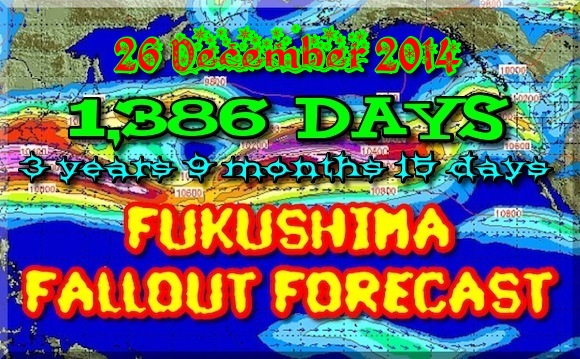
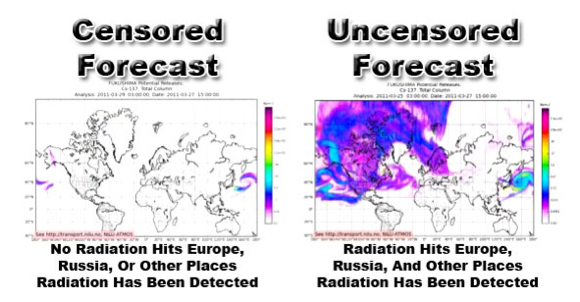
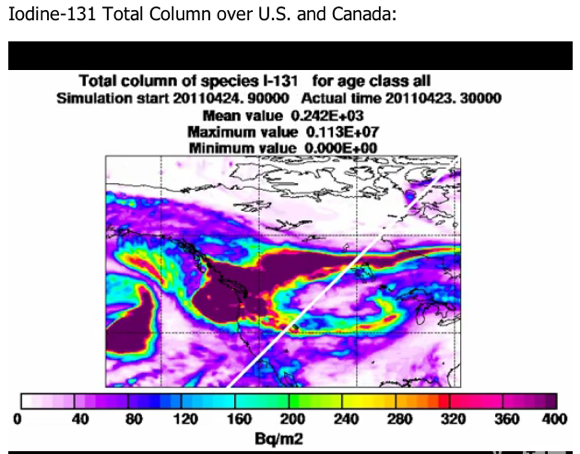
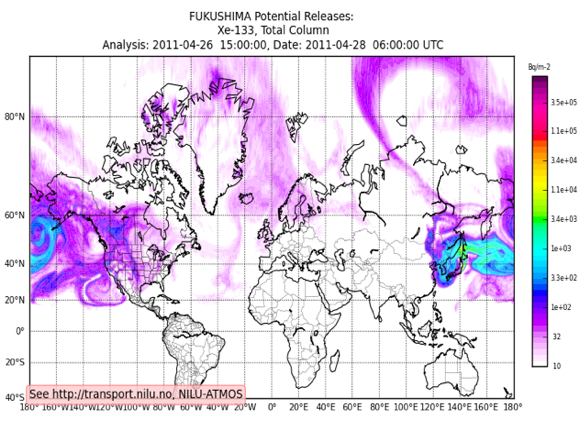
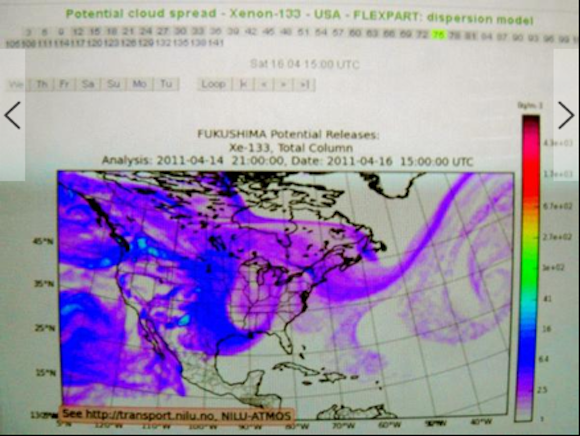
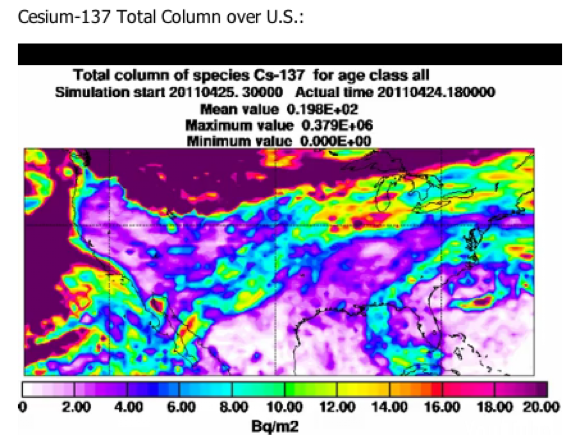
An entire nuclear reactor of full of radioactive material spreading throughout the globe thanks to a high-altitude dirty bomb the likes of which we've never seen.
So how does the triple melt-throughs of "entire nuclear reactor(s) of full of radioactive material(s)" at Fukushima qualify?
...radioactive material spreading throughout the globe thanks to a high-altitude dirty bomb...






originally posted by: thorfourwinds
That's the mapping that ZAMG and other EU countires produced from monitoring sites that caused ZAMG to claim Fuku over twice as much rads as Chernobyl. And those graphs are from late April after Fuku started to settle down a bit and when TEPCO and the govts of Japan and US were saying that little release was still occurring.
Im pretty sure on Qs site there are a full set of mid March graphs that are many times worse than those. And ZAMG was the agency that some of its people went rogue after being shut down and kept posting data.
This is the area that I think is the most important story to come out of Fukus meltdown. As the data was coming out showing greater contamination than TEPCO was claiming to, the US forced other countries to stop reporting this data, shut down its own testing of seafood and seawater and made a bunch of US monitoring sites that were showing high rads, go offline. If made clear enough people could see how our present govt with its so called transparency is doing everything it can to place us in harms way.
edit on 21-3-2015 by zworld because: (no reason given)
a reply to: fakedirt
F, the reason the concept of subduction disposal was eliminated was due to laws stopping ocean disposal and the fear of it coming back up to the surface via volcanism. Neither is a real stopper according to recent research. If the disposal site was far enough in the forearc from the zone of volcanism, by the time the plate and waste subducted to the zone of potential release 30,000 years later a) the worst of the radiation would have spent itself and b) if buried deep enough into the subducting plate it wouldnt be a part of the magma that would come up in a volcano.
The other reason is merely a law that shouldnt apply to disposal deep under the seabed as it applies to dumping into the ocean itself.
Its an idea that shouldnt be ignored if you ask me. Of course there are many nightmare scenarios that could result from our ignorance concerning nuclear reactions, (IE pressure at depth causing explosions before the waste even gets down into the plate is one potential scenario) but we have created a problem that is going to require great risk no matter what is done. We know sending into space is too dangerous as Railgun suggested, putting it into salt caves could come back to haunt us big time and every other idea is just as far out there as subduction disposal so where do we go from here.
F, the reason the concept of subduction disposal was eliminated was due to laws stopping ocean disposal and the fear of it coming back up to the surface via volcanism. Neither is a real stopper according to recent research. If the disposal site was far enough in the forearc from the zone of volcanism, by the time the plate and waste subducted to the zone of potential release 30,000 years later a) the worst of the radiation would have spent itself and b) if buried deep enough into the subducting plate it wouldnt be a part of the magma that would come up in a volcano.
The other reason is merely a law that shouldnt apply to disposal deep under the seabed as it applies to dumping into the ocean itself.
Its an idea that shouldnt be ignored if you ask me. Of course there are many nightmare scenarios that could result from our ignorance concerning nuclear reactions, (IE pressure at depth causing explosions before the waste even gets down into the plate is one potential scenario) but we have created a problem that is going to require great risk no matter what is done. We know sending into space is too dangerous as Railgun suggested, putting it into salt caves could come back to haunt us big time and every other idea is just as far out there as subduction disposal so where do we go from here.
edit on 21-3-2015 by zworld because: (no reason given)
a reply to: zworld
the outer liquid core is about 30% of the earth total mass. imo the ideal area to allow the waste to disperse. as the heavier elements sink the currents would distribute the material and dilute it.
as said previously, the delivery system seems to be the sticking point. same as the space shot. tis a pity lhc hasn't found stable wormhole tech. exit point near mercury would be ideal.
the amount of waste in the 'waiting room' is constantly increasing. there doesn't seem to be any scope for photo-deactivation, the space shot risky. options near zero.
the government consultants need a review of the entire waste management system. approx £2.6billion annual expenditure with regards to the uk.
I appreciate the though you put into this.
best wishes f.
the outer liquid core is about 30% of the earth total mass. imo the ideal area to allow the waste to disperse. as the heavier elements sink the currents would distribute the material and dilute it.
as said previously, the delivery system seems to be the sticking point. same as the space shot. tis a pity lhc hasn't found stable wormhole tech. exit point near mercury would be ideal.
the amount of waste in the 'waiting room' is constantly increasing. there doesn't seem to be any scope for photo-deactivation, the space shot risky. options near zero.
the government consultants need a review of the entire waste management system. approx £2.6billion annual expenditure with regards to the uk.
I appreciate the though you put into this.
best wishes f.
Man, those crafty Japanese...... Let's build a 5 story high wall along the entire coast of Japan.
apnews.myway.com...
SENDAI, Japan (AP) — Four years after a towering tsunami ravaged much of Japan's northeastern coast, efforts to fend off future disasters are focusing on a nearly 400-kilometer (250-mile) chain of cement sea walls, at places nearly five stories high.
Opponents of the 820 billion yen ($6.8 billion) plan argue that the massive concrete barriers will damage marine ecology and scenery, hinder vital fisheries and actually do little to protect residents who are mostly supposed to relocate to higher ground. Those in favor say the sea walls are a necessary evil, and one that will provide some jobs, at least for a time.
In the northern fishing port of Osabe, Kazutoshi Musashi chafes at the 12.5-meter (41-foot)-high concrete barrier blocking his view of the sea.
"The reality is that it looks like the wall of a jail," said Musashi, 46, who lived on the seaside before the tsunami struck Osabe and has moved inland since.
More at the link....
apnews.myway.com...
SENDAI, Japan (AP) — Four years after a towering tsunami ravaged much of Japan's northeastern coast, efforts to fend off future disasters are focusing on a nearly 400-kilometer (250-mile) chain of cement sea walls, at places nearly five stories high.
Opponents of the 820 billion yen ($6.8 billion) plan argue that the massive concrete barriers will damage marine ecology and scenery, hinder vital fisheries and actually do little to protect residents who are mostly supposed to relocate to higher ground. Those in favor say the sea walls are a necessary evil, and one that will provide some jobs, at least for a time.
In the northern fishing port of Osabe, Kazutoshi Musashi chafes at the 12.5-meter (41-foot)-high concrete barrier blocking his view of the sea.
"The reality is that it looks like the wall of a jail," said Musashi, 46, who lived on the seaside before the tsunami struck Osabe and has moved inland since.
More at the link....
The Diary reports today about high levels of tritium in boring wells in the tank farm. These wells are directly west of the boring wells #11 amd #12
which are on the hill west of Units 3 and 4. 11 and 12 were the wells that had high readings a month or so ago that TEPCO then tried to say was coming
from a leak in the tanks. These new readings of wells still further west from the reactors is a straight line from 11 and 12 suggesting that a plume
of radionuclides are traveling somewhere underground upstream from the reactors, heading towards the reactors and the ocean, once again pointing
fingers to an unknown source. No telling what excuse TEPCO will come up with this time.
fukushima-diary.com...
If these high levels of cesium, H3 and Sr90 are indeed coming from leaks in the tanks then there a numerous leaks that they dont know about, which is highly unlikely.
ON EDIT: At the same time the levels of Xe135 continue to go up in Unit 1.
fukushima-diary.com...
If these high levels of cesium, H3 and Sr90 are indeed coming from leaks in the tanks then there a numerous leaks that they dont know about, which is highly unlikely.
ON EDIT: At the same time the levels of Xe135 continue to go up in Unit 1.
edit on 22-3-2015 by zworld because: (no reason given)
concrete coastal wall?
how about a 15 metre above ground to bedrock coffer-dam around the playground followed by a dome to cap off?
I smell deflection from the fuku pr machine.
imo they need to address the ground water and run off to gain any confidence from the public.
the madness continues..
f.
how about a 15 metre above ground to bedrock coffer-dam around the playground followed by a dome to cap off?
I smell deflection from the fuku pr machine.
imo they need to address the ground water and run off to gain any confidence from the public.
the madness continues..
f.
Greetings:
This a compilation that features some of TEPCO's PR videos…
… well worth the look … and laugh.
And, it addresses the ice wall and other walls… must see to believe . . .
FUKUSHIMA 2015 Complete Rare Films Updates and IMPORTANT News on FUKUSHIMA Problem - YouTube
25 February 2015
This a compilation that features some of TEPCO's PR videos…
… well worth the look … and laugh.
And, it addresses the ice wall and other walls… must see to believe . . .
FUKUSHIMA 2015 Complete Rare Films Updates and IMPORTANT News on FUKUSHIMA Problem - YouTube
25 February 2015
edit on 22/3/2015 by thorfourwinds because: ttyyppooss
This is a bit unnerving, to say the least.
FUKUSHIMA RADIATION, & STRANGE HAPPENINGS ON WEST COAST - YouTube
FUKUSHIMA RADIATION, & STRANGE HAPPENINGS ON WEST COAST - YouTube
Remember this from a year ago?
School Science Project Reveals High Levels Of Fukushima Nuclear Radiation in Grocery Store Seafood
27 March 2014
"A Canadian high school student named Bronwyn Delacruz never imagined that her school science project would make headlines all over the world. But that is precisely what has happened.
Using a $600 Geiger counter purchased by her father, Delacruz measured seafood bought at local grocery stores for radioactive contamination. What she discovered was absolutely stunning. Much of the seafood, particularly the products that were made in China, tested very high for radiation.
So is this being caused by nuclear radiation from Fukushima?
Is the seafood that we are eating going to give us cancer and other diseases?
The American people deserve the truth, but as you will see below, the U.S. and Canadian governments are not even testing imported seafood for radiation. To say that this is deeply troubling would be a massive understatement.
In fact, what prompted Bronwyn Delacruz to conduct her science project was the fact that the Canadian government stopped testing imported seafood for radiation in 2012…"
And what should be a major red flag for authorities is the fact that the seafood with the highest radiation is coming from China…
School Science Project Reveals High Levels Of Fukushima Nuclear Radiation in Grocery Store Seafood
27 March 2014
"A Canadian high school student named Bronwyn Delacruz never imagined that her school science project would make headlines all over the world. But that is precisely what has happened.
Using a $600 Geiger counter purchased by her father, Delacruz measured seafood bought at local grocery stores for radioactive contamination. What she discovered was absolutely stunning. Much of the seafood, particularly the products that were made in China, tested very high for radiation.
So is this being caused by nuclear radiation from Fukushima?
Is the seafood that we are eating going to give us cancer and other diseases?
The American people deserve the truth, but as you will see below, the U.S. and Canadian governments are not even testing imported seafood for radiation. To say that this is deeply troubling would be a massive understatement.
In fact, what prompted Bronwyn Delacruz to conduct her science project was the fact that the Canadian government stopped testing imported seafood for radiation in 2012…"
Alberta high-school student Bronwyn Delacruz loves sushi, but became concerned last summer after learning how little food inspection actually takes place on some of its key ingredients.
The Grade 10 student from Grande Prairie said she was shocked to discover that, in the wake of the 2011 Fukushima nuclear disaster in Japan, the Canadian Food Inspection Agency (CFIA) stopped testing imported foods for radiation in 2012.
And what should be a major red flag for authorities is the fact that the seafood with the highest radiation is coming from China…
These are screenshots from TEPCO's vids above.
The river runs through it, picking up radionuclides along the way and dumping them in the harbor.
Oh, right, to be contained by the seawall…
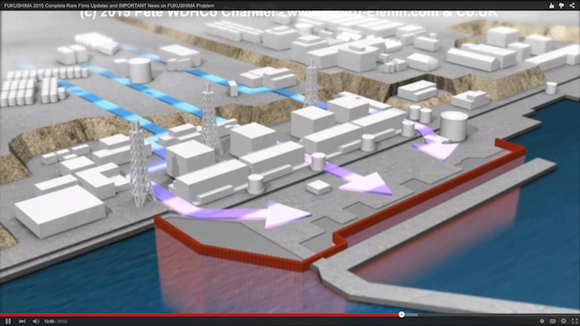
Here's the plan to divert the underground river around the plant.
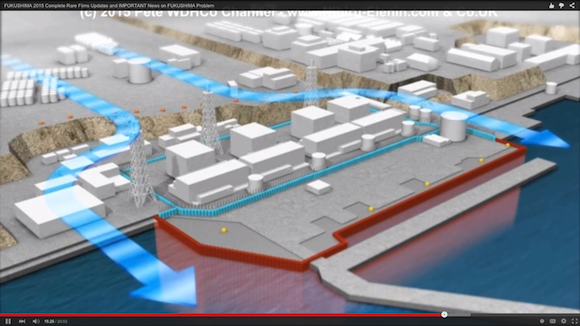
This speaks for itself.
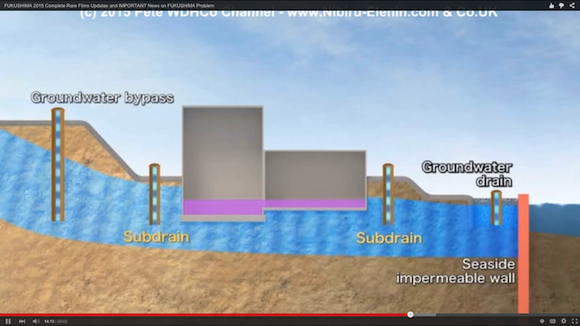
The ice wall.
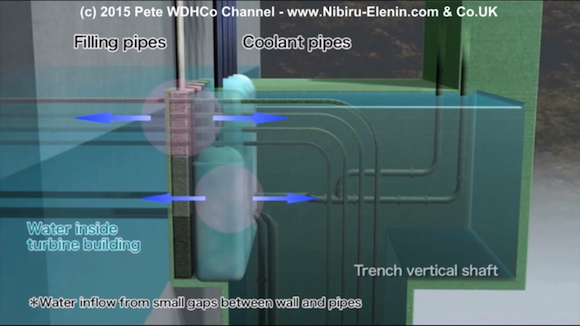
"OK"
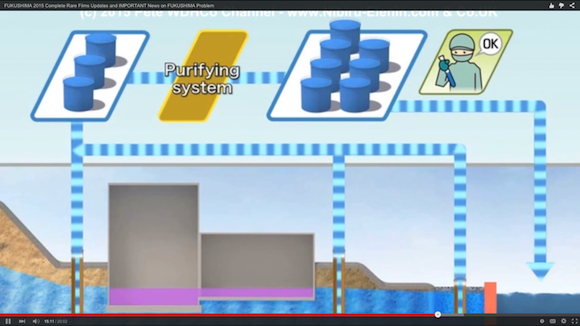
The river runs through it, picking up radionuclides along the way and dumping them in the harbor.
Oh, right, to be contained by the seawall…

Here's the plan to divert the underground river around the plant.

This speaks for itself.

The ice wall.

"OK"


Animal lover: Naoto Matsumura, 53, feeds dogs, cats, cows, horses and even ostriches
Last man standing: Fukushima animal lover stayed behind after nuclear disaster to feed abandoned pets - Mirror Online
15 March 2015
An animal lover who returned to the Fukushima exclusion zone after the devastating tsunami risked his life to feed the abandoned animals.
Farmer Naoto Matsumura, 53, returned to the area in Japan to care for the pets left behind when residents were evacuated.
Disaster struck following an earthquake in March 2011, which resulted in a nuclear meltdown when the plant was hit by a tsunami.
Nearly 57,000 people fled their homes due to risks from radiation, leaving animals to starve.
But Mr Matsumura, nicknamed Macchan, who initially left when the earthquake struck, returned.


Hero: Naoto has been nicknamed "the last man of Fukushima" (credit GETTY)
He soon moved back to the small town of Tomioka, just seven miles form the power plant, and has cared for the animals ever since.
Macchan, dubbed "the last man of Fukushima", told Vice in 2011 that he found many of the dogs still tied up because their owners thought they'd be home soon.
He said: "From then on, I fed all the cats and dogs every day."

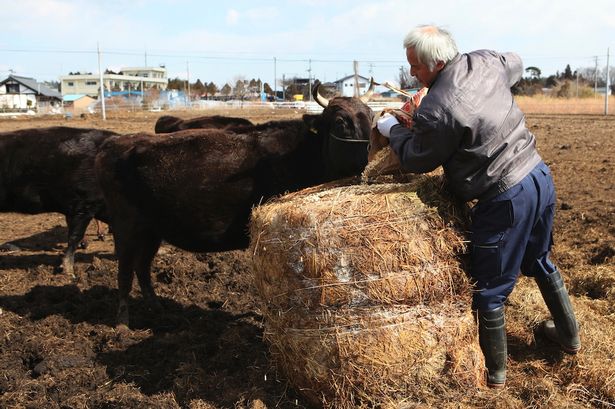
Dangerous: Naoto returned to the exclusion zone despite risks of radiation (credit REUTERS)
They couldn't stand the wait, so they'd all gather around barking up a storm as soon as they heard my truck.
"Everywhere I went there was always barking. Like 'we're thirsty' or 'we don't have any food' so I just kept making the rounds.
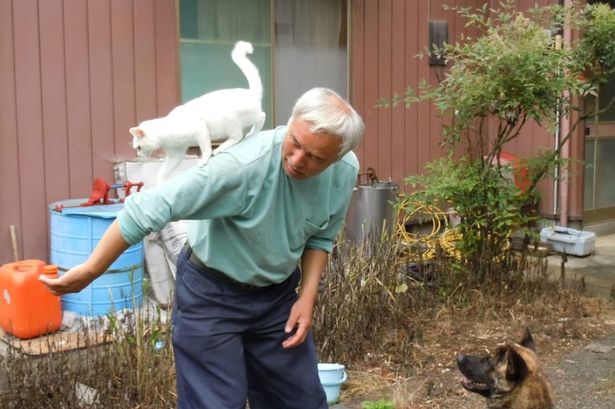
Caring: Naoto Matsumura says the abandoned animals gather round his truck when he arrives with food
Four years on, he is looking after dogs, cats, cows, horses and even ostriches.
Macchan feeds the animals with donations, including donations of water, from people outside the exclusion zone.

new topics
-
Watch as a 12 million years old Crab Emerges from a Rock
Ancient & Lost Civilizations: 2 hours ago -
ILLUMINATION: Dimensions / Degrees – Da Vincis Last Supper And The Philosophers Stone
Secret Societies: 8 hours ago -
Just Sick of It! Done! Can't take it anymore!
General Chit Chat: 9 hours ago -
Speaking of Pandemics
General Conspiracies: 11 hours ago -
Stuck Farmer And His Queue Jumping Spawn
Rant: 11 hours ago
top topics
-
Speaking of Pandemics
General Conspiracies: 11 hours ago, 9 flags -
Watch as a 12 million years old Crab Emerges from a Rock
Ancient & Lost Civilizations: 2 hours ago, 9 flags -
ILLUMINATION: Dimensions / Degrees – Da Vincis Last Supper And The Philosophers Stone
Secret Societies: 8 hours ago, 7 flags -
Just Sick of It! Done! Can't take it anymore!
General Chit Chat: 9 hours ago, 5 flags -
Stuck Farmer And His Queue Jumping Spawn
Rant: 11 hours ago, 4 flags
active topics
-
Winter Storm
Fragile Earth • 30 • : RickinVa -
Candidate Harris Supporter MARK CUBAN Says Trump Has No Smart-Intelligent Women in His Orbit.
2024 Elections • 86 • : Oldcarpy2 -
Watch as a 12 million years old Crab Emerges from a Rock
Ancient & Lost Civilizations • 9 • : FullHeathen -
-@TH3WH17ERABB17- -Q- ---TIME TO SHOW THE WORLD--- -Part- --44--
Dissecting Disinformation • 3941 • : WeMustCare -
Orbs Appear And Form Triangle On Live Cam.
Aliens and UFOs • 28 • : DaydreamerX -
Musk calls on King Charles III to dissolve Parliament over Oldham sex grooming gangs
Mainstream News • 173 • : Oldcarpy2 -
Nigel Farage's New Year Message.
Politicians & People • 24 • : gortex -
Undiagnosed China Pneumonia Reported
Diseases and Pandemics • 48 • : AdultMaleHumanUK -
DONALD J. TRUMP - TIME's Most Extraordinary Person of the Year 2024.
Mainstream News • 60 • : xuenchen -
Meta Llama local AI system is scary good
Science & Technology • 35 • : Arbitrageur
